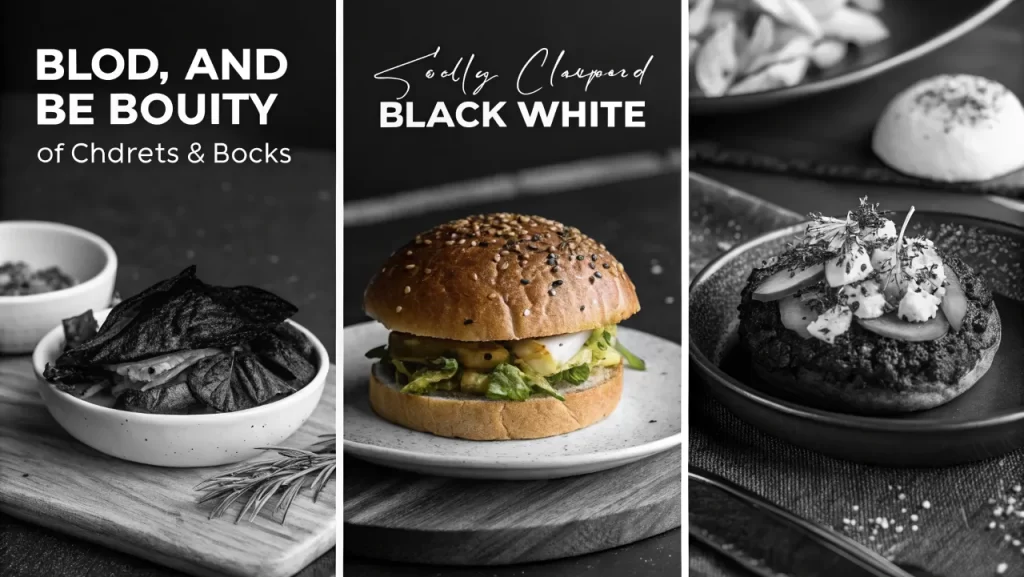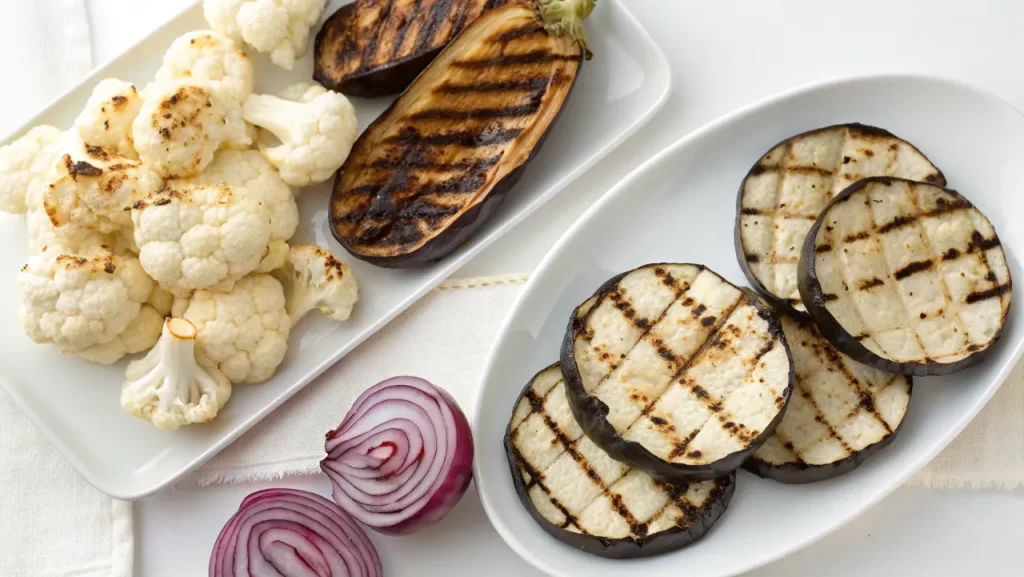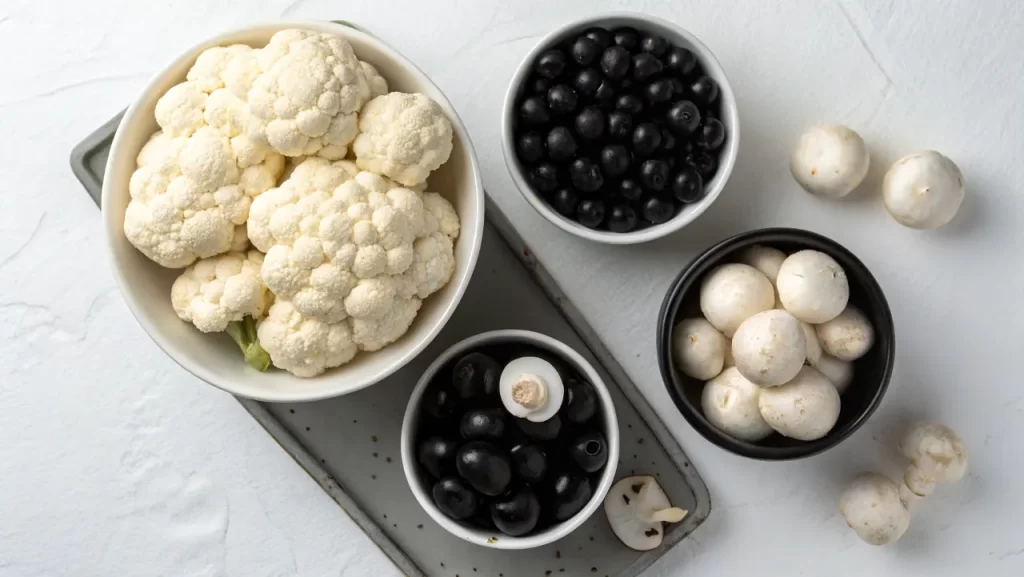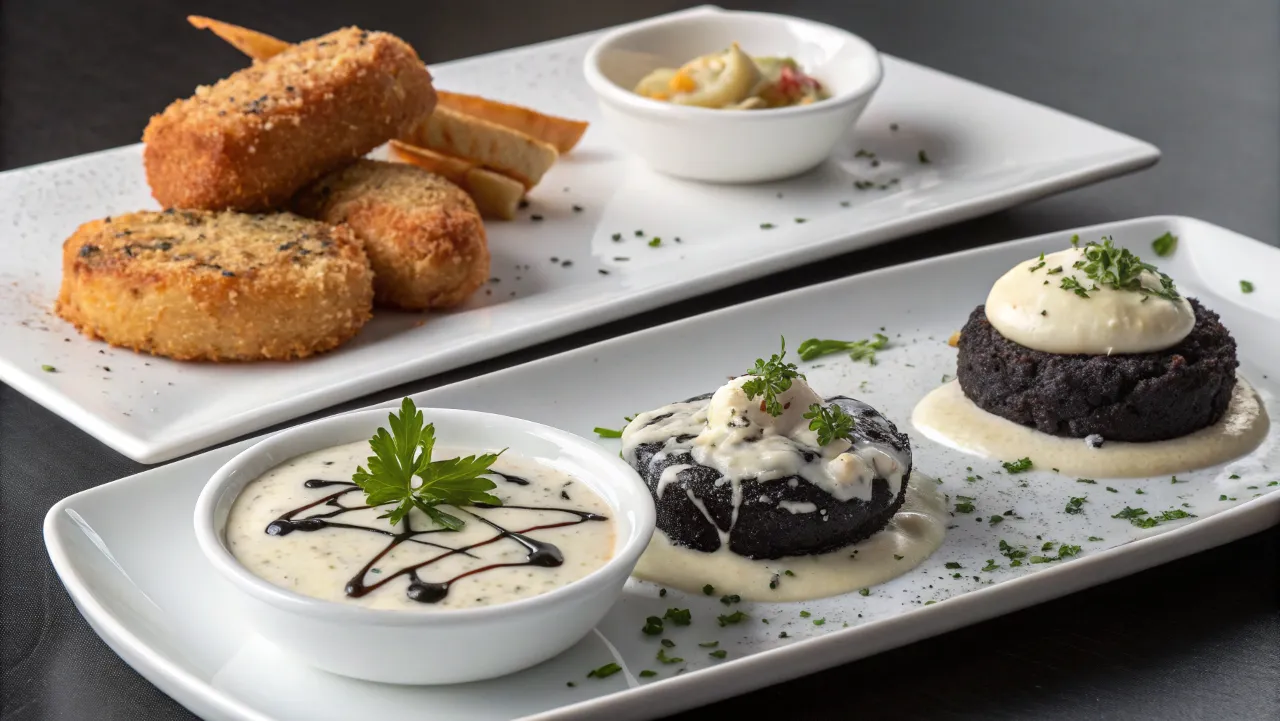Table of Contents
When it comes to food, flavor might steal the show, but appearance often sets the stage. One visual trend that continues to capture the imagination of chefs, home cooks, and food lovers alike is black and white food.
This striking combination isn’t just about color contrast—it’s about creativity, balance, and a whole new way of appreciating what’s on your plate. From naturally pigmented ingredients to thoughtfully designed dishes, black and white food has become a visual and culinary experience all its own.
The Allure of Contrast on a Plate
Black and white dishes aren’t just about looking good on Instagram. The appeal runs deeper. The stark contrast between these two colors adds drama, elegance, and intrigue to a plate.
Whether it’s the rich black of squid ink pasta against a velvety white sauce or the playful pattern of an Oreo cookie, the visual impact is immediate. But it also invites curiosity—how does it taste? What’s in it? This contrast often signals balance in flavor and texture as well.
Classic Favorites That Inspire

One of the most iconic examples of black and white food is the Oreo cookie. Its near-black chocolate wafers sandwiched around a white cream center have inspired countless desserts, from milkshakes to cheesecakes.
Salt and pepper are another everyday example. These two basic yet essential seasonings represent the most literal form of black and white partnership in the kitchen.
Nature’s Own Color Palette
Nature offers plenty of naturally black-and-white ingredients, making this aesthetic easy to achieve without food coloring or gimmicks. Take black beans and white rice, a classic pairing found in many Latin American cuisines.
Or consider black olives served with creamy white feta in a Mediterranean salad. You can even find vegetables like the Black Spanish radish, with its jet-black skin and snowy interior. Blackberries and yogurt? Simple, elegant, and delicious.
Also Read: The Ultimate Guide to Toastul: A Journey Through Texas Toast and Cowboy Toast
Sweet Meets Sophistication
Desserts are where black-and-white food really shines. Think of a silky panna cotta swirled with black sesame paste. Or a tuxedo cake that layers dark chocolate with white frosting, creating a refined, layered appearance.
Cookies and cream, as well as anything from ice cream to truffles, continue to be a fan favorite. These treats aren’t just sweet; they’re stylish, too.
Savory Dishes with Striking Contrast
It’s not just desserts getting the monochrome treatment. Squid ink pasta has become a staple in modern fine dining, often paired with scallops or a white wine cream sauce for contrast.
Charcoal-crusted pizza, another bold dish, features a black dough topped with fresh mozzarella and white sauce. Even deviled eggs can be dressed up with a spoonful of black caviar, turning a humble snack into a gourmet appetizer.
Beyond the Plate: Symbolism in Culinary Color

In some cultures, black and white food goes beyond just looks. It carries meaning. For instance, Chinese philosophy emphasizes the yin-yang principle—opposites in harmony. This idea can be beautifully expressed in dishes that balance dark and light elements, both in flavor and presentation.
In traditional Tibetan practices, “white food” (dairy) is eaten during summer, while “black food” refers to items to avoid during meditation for mental clarity.
Ingredients That Do the Heavy Lifting
Creating black and white food doesn’t require fancy tools—just the right ingredients. On the black side, you have options like black rice, black sesame, activated charcoal, black garlic, and black lentils.
On the white side, think cauliflower, coconut, egg whites, white beans, mozzarella, and cream. Mixing and matching these ingredients allows for endless culinary combinations that satisfy both the palate and the eye.
Also Read: How Much Are Coconuts in America? Essential market insights!
Produce That Brings It All Together
Look to fruits and vegetables for natural black and white beauty. Blackberries, black grapes, and black currants are rich in antioxidants and deep in color. On the white end, coconut, jicama, and white asparagus offer freshness and crunch. Dragon fruit with white flesh and tiny black seeds is perhaps the perfect example of this color combo straight from nature.
The Health Perks Behind the Palette
The benefits of eating black and white foods go far beyond aesthetics. Many black ingredients, like black beans, blackberries, and black rice, are rich in anthocyanins—powerful antioxidants that help fight inflammation and protect cells.
White foods like garlic, onions, and cauliflower support immune health and contain anti-cancer compounds. When paired, they not only create visual harmony but nutritional balance too.
Black and White in Beverage Form

Don’t overlook drinks when exploring black and white food. White Russian and Black Russian cocktails, for example, use dark coffee liqueur and light cream to achieve a layered, striking effect. Milkshakes made with cookies and cream, or even white and dark chocolate mocha drinks, continue the theme in a fun, drinkable format.
Also Read: Biitland.com Stablecoins: The Bridge Between Crypto and Stability
Celebrating with Style
Black and white foods are especially popular at themed events like weddings, galas, or New Year’s Eve parties. Their timeless elegance pairs well with formal settings, adding an air of sophistication to everything from hors d’oeuvres to the dessert table. Even a simple platter of white cheese cubes and black grapes can make a bold, festive statement.
Final Thoughts
Black and white food isn’t just a trend—it’s a creative way to reimagine everyday ingredients. It’s a playful invitation to explore texture, balance, and color in your cooking. Whether you’re layering a rich dessert, pairing bold flavors, or plating up a weeknight meal, these two tones offer endless inspiration.
So next time you’re in the kitchen, look for the balance. It might just be in black and white. Advantages of platforms like elephantsands.com. Submit a guest post, share a quote, or simply learn something new—the possibilities are as broad as the topics you’ll find there.
FAQs
What is black and white food?
Black and white food refers to dishes or ingredients that feature a strong contrast between black and white colors, either naturally or by design.
Is black and white food healthy?
Yes! Many black and white foods like black beans, garlic, and yogurt are rich in antioxidants, fiber, and nutrients that support overall health.
How do I make a black and white themed meal?
Combine ingredients like black rice with white fish or use squid ink pasta with a creamy sauce. Focus on contrast in color, texture, and flavor.






